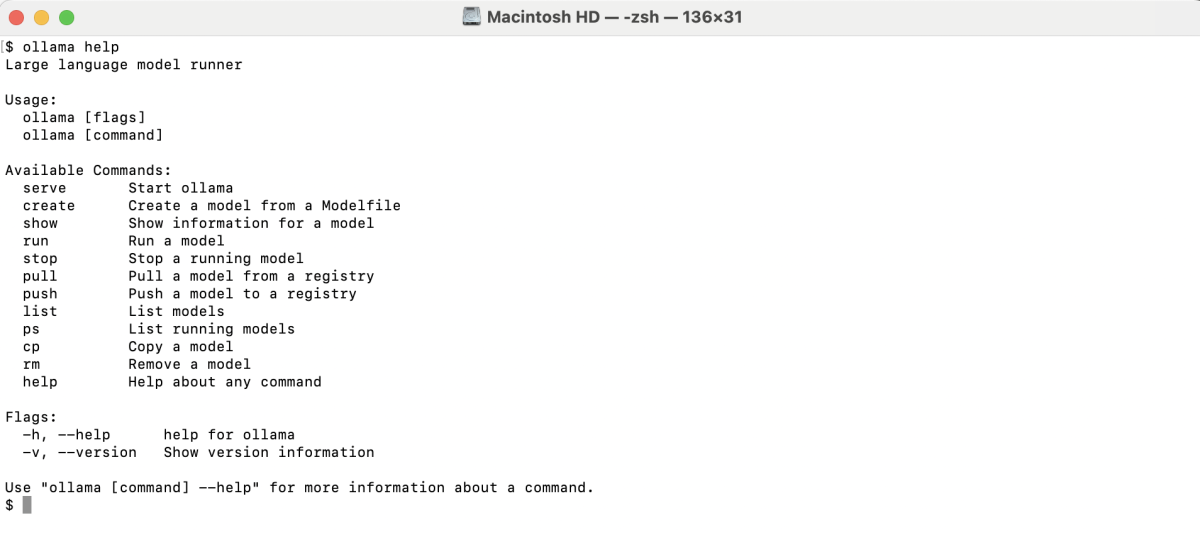Ollama provides a powerful set of command line tools to help you manage, use, and experiment with local AI models right on your machine. Here are the most common and useful Ollama CLI commands for your day-to-day workflow.
Step 1 : List Installed Models
To view all models installed locally, use:

This will display each model's name, tag, size, and last modified date.
Step 2 : Remove an Unused Model
To delete a model you no longer need:
For example, to remove the llama3.2:1b model:

After removing, you can run ollama list again to confirm the model is gone.

Step 3 : Get Help and See Available Commands
If you want to see all available commands or need help with the Ollama CLI, run:

You'll see a list of commands like: serve, create, show, run, stop, pull, push, list, ps, and rm.
Step 4 : Download a New Model
To pull a new model onto your machine (for example, mistral):

You can find the latest model names on the official Ollama model library.
Step 5 : Run a Model and Start a Chat Session
To start an interactive chat session with a model in your terminal:

Type your questions or prompts and Ollama will generate responses directly in the terminal.
Step 6 : View Model Details
To see model configuration and metadata:

Step 7 : List Running Models
To see which models are currently running, use:

This will display all active Ollama model processes.
Step 8 : Stop a Running Model
To stop a specific running model, use:
For example, to stop the mistral model:

These basic CLI commands are all you need to get started with managing and interacting with Ollama models. Try each one out to get comfortable working with local AI models on your own machine.